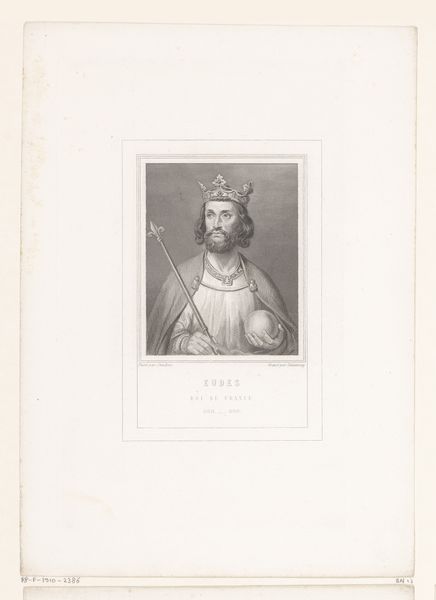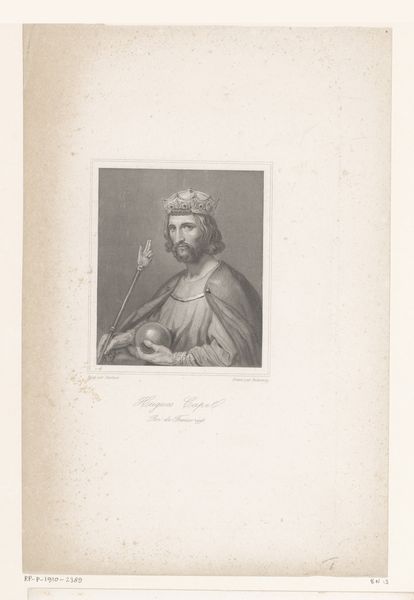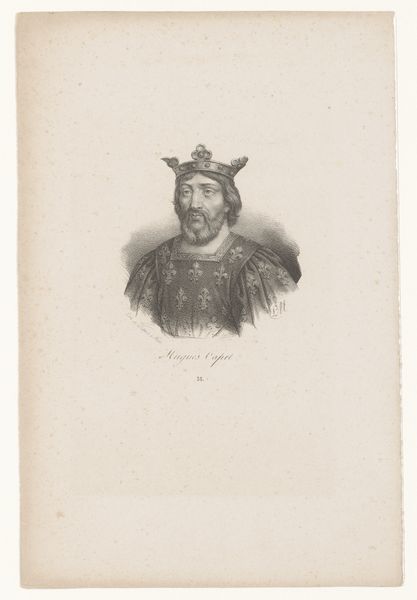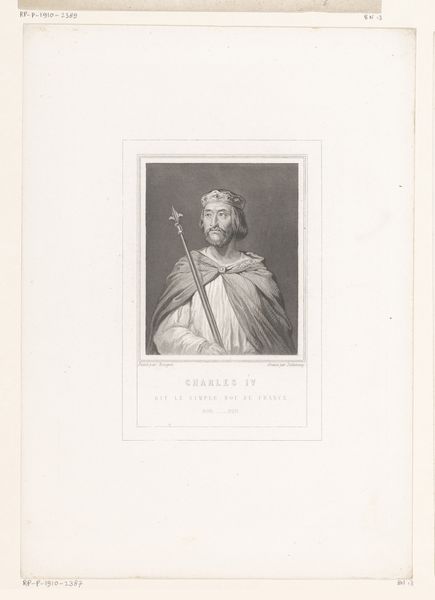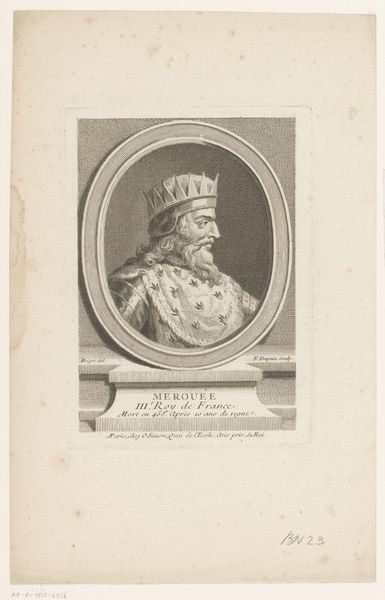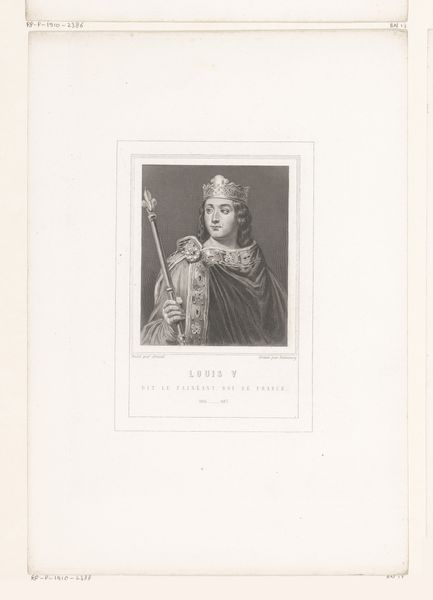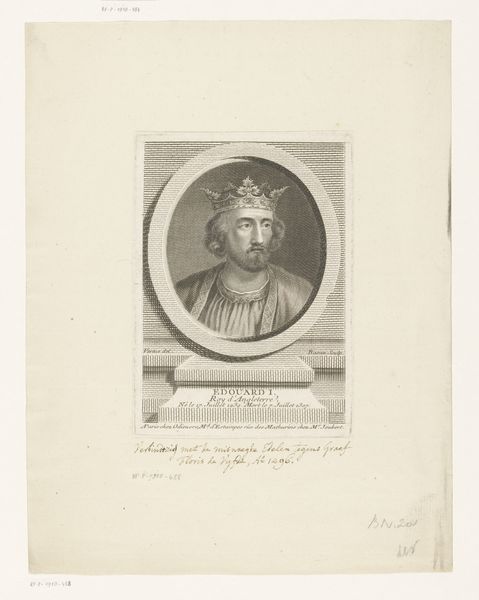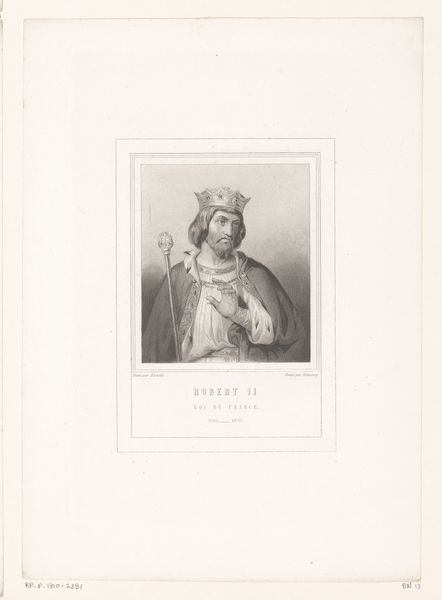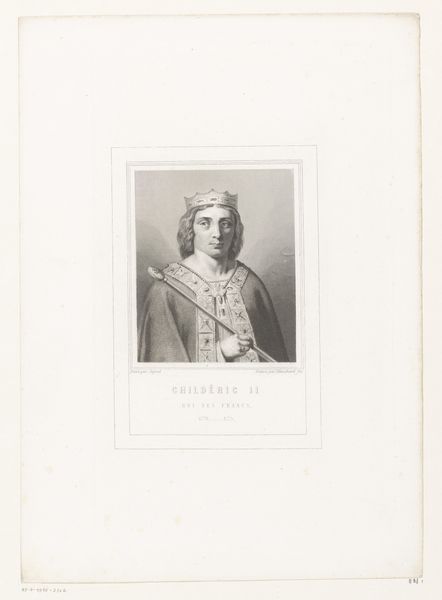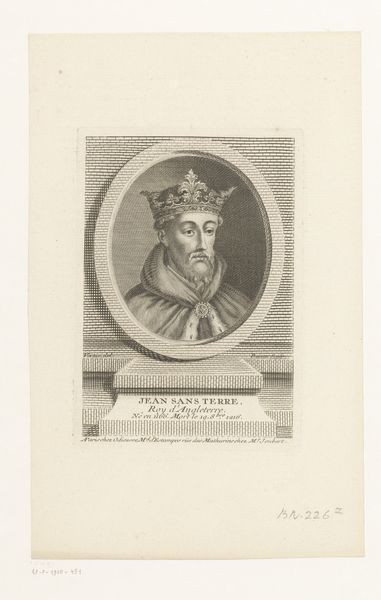
print, engraving
#
portrait
#
medieval
# print
#
old engraving style
#
history-painting
#
engraving
Dimensions: height 243 mm, width 195 mm
Copyright: Rijks Museum: Open Domain
Curator: A compelling portrait! This engraving from 1829-1898 by Auguste Thomas Marie Blanchard depicts Chlotharius III, a king from the Frankish Merovingian dynasty. Editor: My first impression is one of slightly melancholic authority. The pale tonality gives the subject a removed and ethereal quality, as if he’s a ghost of rulers past. Curator: Blanchard's choice of the engraving medium invites us to consider the layered symbolic weight. As a print, this image carries echoes of dissemination, a desire to convey something beyond the singular likeness of a man. Editor: Indeed. I think we need to consider who chose to portray Chlotharius centuries after his death. Was it purely an antiquarian interest, or a statement about power in the 19th century itself? Blanchard's artistry isn't just reflecting the past, it's participating in the ever-shifting present. Curator: The regal objects themselves—the crown and the scepter—serve as symbolic embodiments of divine right and inherited power. They act as potent signifiers within a system of cultural understanding, shaping how power is perceived. Editor: Right. The crown isn’t just decorative. It represents an inherited role, but perhaps one increasingly challenged at the time this print was made. Royal portraiture always negotiates this tension. Even in seeming veneration, there may be a quiet subversion, an invitation to question. How complicit is Blanchard in upholding a vision of static authority versus questioning the established order? Curator: That’s a compelling point. One also might ponder the meaning of such artifacts and their symbolism across time—how it transcends periods and reigns to embody core themes about authority and influence. Editor: Exactly, and bringing that interpretation forward helps us to dissect lingering vestiges of these symbols of power even now. It’s a useful thing to investigate how certain themes refuse to vanish from view. Curator: A stimulating discussion, thank you. It sheds light on the depth beneath what some might mistake as simply a conventional historical print. Editor: Agreed. I’m reminded that art always participates in conversations far beyond its immediate subject. I hope listeners explore similar throughlines when encountering work in this exhibit.
Comments
No comments
Be the first to comment and join the conversation on the ultimate creative platform.
